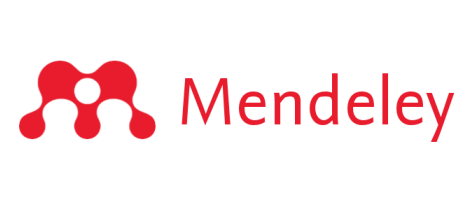Influence of Intellectual Capital, Capital Structure and Firm Size on Financial Performance of PT XL Axiata Tbk
Keywords:
Intellectual Capital, Capital Structure, Firm Size, Profitability, Financial PerformanceAbstract
Profitability is important for companies to measure the company's ability to generate profits. The decline in profitability encourages companies to understand the factors that can influence it. This research is conducted to examine and explain the effect of Intellectual Capital, Capital Structure, and Company Size on the Financial Performance of PT XL Axiata Tbk. In this study, the intellectual capital was measured by using the VAIC method, the capital structure was proxied by Debt to Assets Ratio (DAR), firm size was calculated by using the logarithm of total assets, and financial performance was proxied by Return on Assets (ROA). This type of study is explanatory research using a quantitative approach. The data were analyzed using multiple linear regression supported by IBM SPSS Statistic 25. The results of this study indicate that variable intellectual capital and firm size partially have a significant effect on ROA. Meanwhile, capital structure (DAR) has no significant effect on the ROA of PT XL Axiata Tbk. Based on the determination coefficient, intellectual capital, capital structure, and firm size have an influence on ROA of PT XL Axiata Tbk by 82,1%. Meanwhile, the remaining 17,9% is influenced by other variables which are not examined in this research.
Profitabilitas penting bagi perusahaan untuk mengukur kemampuan perusahaan menghasilkan laba. Penurunan profitabilitas mendorong perusahaan untuk memahami faktor-faktor yang dapat mempengaruhinya. Tujuan utama dari penelitian ini adalah untuk menguji dan menjelaskan pengaruh Modal Intelektual, Struktur Modal, dan Ukuran Perusahaan terhadap Profitabilitas PT XL Axiata Tbk. Dalam penelitian ini, modal intelektual diukur dengan metode VAIC, struktur modal diproksikan dengan Debt to Assets Ratio (DAR), ukuran perusahaan dihitung dengan menggunakan logaritma dari total aset, dan kinerja keuangan diproksikan dengan Return on Assets (ROA). Jenis penelitian ini adalah explanatory research dengan menggunakan pendekatan kuantitatif. Hasil dari penelitian ini menunjukkan bahwa variabel modal intelektual dan ukuran perusahaan secara parsial berpengaruh signifikan terhadap ROA. Sedangkan struktur modal (DAR) tidak berpengaruh signifikan terhadap ROA PT XL Axiata Tbk. Berdasarkan koefisien determinasi, modal intelektual, struktur modal, dan ukuran perusahaan berpengaruh terhadap ROA PT XL Axiata Tbk sebesar 82,1%. Sedangkan sisanya sebesar 17,9% dipengaruhi oleh variabel lain yang tidak diteliti dalam penelitian ini
References
Alarussi, A. S., & Alhaderi, S. M. (2018). Factors affecting profitability in Malaysia. Journal of Economic Studies, 45(3), 442–458. https://doi.org/10.1108/JES-05-2017-0124
Asare, N., dkk. (2017). Intellectual capital and profitability in an emerging insurance market. Journal of Economic and Administrative Sciences, 33(1), 2–19. https://doi.org/10.1108/jeas-06-2016-0016
Brem, A. 2019. Managing Innovation: What Do We Know About Innovation Success Factors?. New Jersey: World Scientific Publishing Company
Gantino, R., & Alam, L. R. (2021). Pengaruh Intellectual Capital dan Corporate Social Responsibility terhadap Nilai Perusahaan dimoderasi oleh Kinerja. Esensi: Jurnal Bisnis Dan Manajemen, 10(2), 215–230. https://doi.org/10.15408/ess.v10i2.18858
Gantino, R., Ruswanti, E., & Rahman, T. (2019). Leadership Style, Intellectual Capital , Corporate Social Responsibility and Corporate Performance : A Compara- tive study between two Indonesian Industries. 2(3), 203–217.
Ghozali, Imam. (2018). Aplikasi Analisis Multivariate dengan Program IBM SPSS 25 Edisi 9. Semarang, Badan Penerbit Universitas Diponegoro.
Hair, Joseph F., William Black, Barry J. Babin, Rolph Anderson. (2019). Multivariate Data Analysis, 8th Edition. United Kingdom: Cengage.
Hery. 2016. Analisis Laporan Keuangan. Jakarta: Grasindo
Hery. 2017. Kajian Riset Akuntansi. Jakarta: Grasindo
Irfani, A. S. 2020. Manajemen Keuangan dan Bisnis; Teori dan Aplikasi. Jakarta: Gramedia Pustaka Utama
Kasmir. 2016. Pengantar Manajemen Keuangan. Jakarta: Prenada Media
Lorenza, D., Kadir, M. A., & Sjahruddin, H. (2020). Pengaruh Struktur Modal dan Ukuran Perusahaan Terhadap Profitabilitas Pada Perusahaan Otomotif Yang Terdaftar Di Bursa Efek Indonesia. Jurnal Ekonomi Manajemen, 6(1), 13–20.
Musah, A. (2018). The Impact of Capital Structure on Profitability of Commercial Banks in Ghana. Asian Journal of Economic Modelling, 6(1), 21–36. https://doi.org/10.18488/journal.8.2018.61.21.36
Purba, J. H. V., & Bimantara, D. (2020). The Influence of Asset Management on Financial Performance, with Panel Data Analysis. 143(Isbest 2019), 150–155. https://doi.org/10.2991/aebmr.k.200522.031
Rahadian, D., & Ramandhini, Z. F. (2021). Capital Structure and Its Implication on Profitability: An Empirical Study from Sharia Banks in Indonesia. Budapest International Research and Critics Institute (BIRCI-Journal): Humanities and Social Sciences, 4(2), 2083–2091. https://doi.org/10.33258/birci.v4i2.1898
Rodoni, A., & Ali, H. 2014. Manajemen Keuangan Modern. Jakarta: Mitra Wacana Media
Rosafitri, C. (2017). Interaksi Good Corporate Governance, Corporate Social Responsibility, Intellectual Capital Dan Pengaruhnya Terhadap Kinerja Keuangan Perusahaan. Journal of Accounting Science, 1(1), 1. https://doi.org/10.21070/jas.v1i1.775
Shahnia, C., dkk. (2020). Determinant of profitability: Evidence from trading, service and investment companies in Indonesia. Accounting, 6(5), 787–794. https://doi.org/10.5267/j.ac.2020.6.004
Subramanyam, K. R. 2017. Analisis Laporan Keuangan. Jakarta: Salemba Empat
Sukmayanti, N. W. P., & Triaryati, N. (2018). Pengaruh Struktur Modal, Likuiditas dan Ukuran Perusahaan Terhadap Profitabilitas pada Perusahaan Property dan Real Estate. E-Jurnal Manajemen Universitas Udayana, 8(1), 172. https://doi.org/10.24843/ejmunud.2019.v08.i01.p07
Ulum, I., Kharismawati, N., & Syam, D. (2017). Modified value-added intellectual coefficient (MVAIC) and traditional financial performance of Indonesian biggest companies. International Journal of Learning and Intellectual Capital, 14(3), 207–219. https://doi.org/10.1504/IJLIC.2017.086390
Downloads
Published
Issue
Section
License
Copyright (c) 2025 Cindy Dwi Alvionita, Umar Farouk, Subandi

This work is licensed under a Creative Commons Attribution 4.0 International License.
The copyright of the received article shall be assigned to the journal as the publisher of the journal. The intended copyright includes the right to publish the article in various forms (including reprints). The journal maintains the publishing rights to the published articles.

This work is licensed under a Creative Commons Attribution 4.0 International License.





